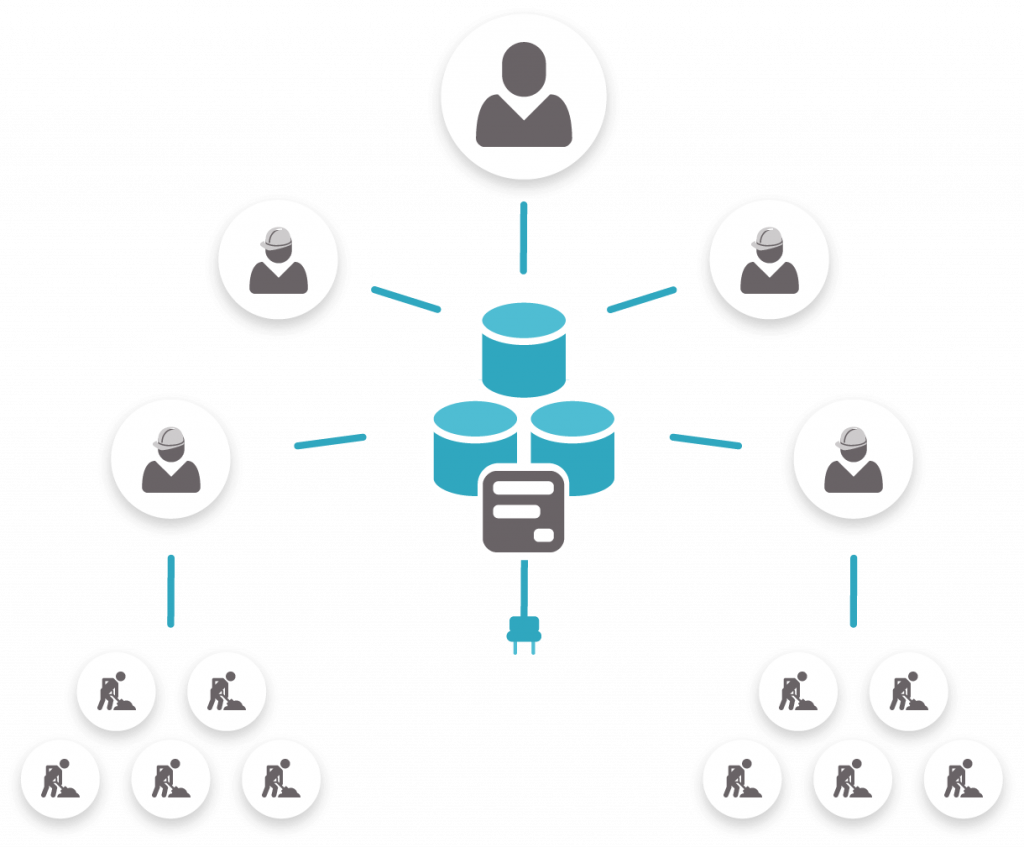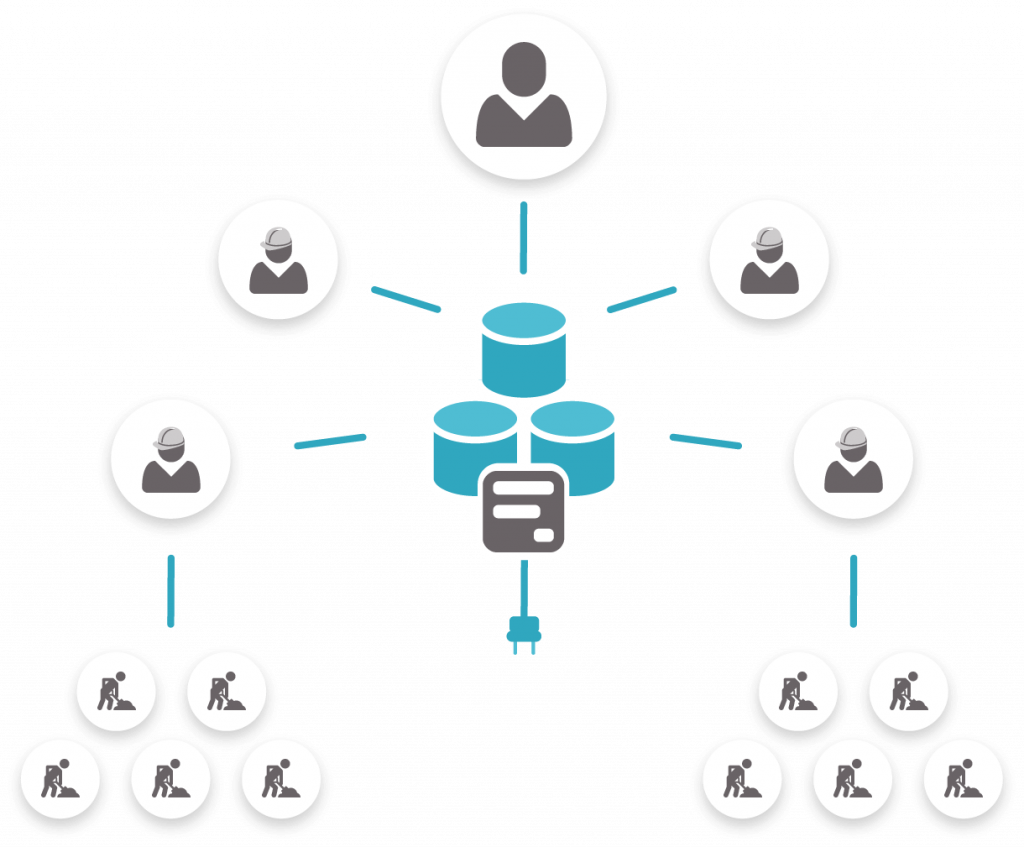Infrastructure projects are vital for every country in the world. It's what allows us to move around every day or have energy in the buildings where we live and work. Schools, highways, new metro stations are just a few examples of why infrastructure construction projects are so important for a nation.
Entering the digital era, the development of infrastructure projects is increasing at a rapid pace. This is the result of a number of factors, such as the increase in the world's population and the serious lack of affordable housing.
Furthermore, the need for smart, data-driven infrastructure is more imminent than ever. Without exaggeration, it can pave the way for the emergence of more interconnected cities with effective and intelligent structures.
In the United Kingdom alone, during 2019 the forecast infrastructure output is expected to increase to 13.1%, as a continuation of the large investment in major infrastructure projects in subsectors such as electricity, water and sewage and rail transport.
What is infrastructure project management?
It is already clear that infrastructure construction projects can improve both the economic output of society and the quality of life of its members. In this sense, the value of updated management of infrastructure projects is immense.
Infrastructure project management could simply be defined as the management of infrastructure construction projects. From a general point of view, it follows the same processes and principles as other project management categories in construction.
The slightest delay in one aspect of an infrastructure project can lead to serious delays across the entire project, resulting in budget overruns and costly disputes between different stakeholders.
“Within the industry, the program is king. If we don’t deliver on time, it will cost us more money, or alternatively, it will cost someone else more money,” explains Matt Ghinn, Project Director at VolkerFitzpatrick.
Types of Infrastructure Construction Projects
Of course, not all infrastructure construction projects are the same. Despite the similar difficulties they have to fight against, there are several different types of projects of this type. In summary, here are the main categories of infrastructure construction projects:
- Roads and highways: One of the most common types of infrastructure construction projects. When it comes to roads, these projects mainly focus on repair and maintenance, as rebuilding an entire road can be expensive. In the case of a highway, things may differ slightly, with reconstruction or expansion considered one of the main options.
- Airports: Airports need continuous improvements and expansions. In an effort to provide high-quality services and resolve air traffic congestion, airports invest both in building new runways and creating more useful areas for passengers.
- Energy network: According to the CPA (Construction Products Association), electricity is the largest sub-sector of infrastructure projects in UK construction and is expected to grow exponentially by 2020. Such projects may focus on generation or energy transmission. Furthermore, maintenance and/or repair of a power plant can also be part of this process.
- Railway: The development and maintenance of depots and railway infrastructure is another area of great activity in infrastructure projects. Its main objective is to reduce passenger congestion, support the regeneration of different neighborhoods and connect cities and areas quickly and efficiently.
- Telecommunications Infrastructure: Telecommunications covers a wide spectrum of technologies and services that connect the entire world. Depending on the geographic location, the quality of telecommunications may vary.
- Water infrastructure: Water infrastructure projects ensure that all citizens can have access to the most precious asset on Earth. Projects that combat water scarcity and projects that facilitate its distribution are two of the most characteristic examples of water infrastructure projects. Needless to say, the nature of such projects may differ from country to country depending on the local climate.
- Bridges: Another common but very important infrastructure project has to do with building or repairing bridges. They can provide a great service when it comes to reducing traffic, but they come with a huge administrative burden. One of the biggest challenges is the maintenance/repair of bridges, as they continually accommodate a large number of people.
- Waste management: Regardless of the type of waste, waste management projects play a significant role in the effort to keep people and the environment safe. This could translate into projects focused on removing and transporting waste and hazardous materials out of cities.
- Social infrastructure: Schools and hospitals are two of the most classic examples of social infrastructure. Simply put, it is infrastructure that aims to provide a service of social value to the public.
What is the difference between Infrastructure Management and Construction Management?
Infrastructure management and construction management may intersect in some phases of the project, but they have a big difference. Infrastructure management covers a broader spectrum of project phases, from design to construction, legal, finance and operations.
In other words, infrastructure management focuses on managing infrastructure throughout its entire life cycle. Furthermore, infrastructure management projects normally target a larger part of society and involve the State as a Client or at least one of its main stakeholders.
Find it here: Contract Award Handbook – What to do when you've just been awarded a contract
At the same time, construction management is primarily concerned with what happens during the construction phase of the project. From real-time planning and progress reporting to on-site verification and monitoring, construction management is primarily about building and/or repairing a new structure rather than managing all aspects of it.
The biggest challenges in managing infrastructure projects
Managing an infrastructure project is not easy. There are a multitude of parameters that must be taken into consideration for a project to be started and completed on time and within budget. Stakeholders and tasks are inextricably linked to each other, so every change to the agreed plan is important.
That said, it is of paramount importance that the program is followed accurately and that all interested parties have access to a centralized hub where all information is stored. This way, no one is working on an outdated version of the program and costly misunderstandings are avoided.
In short, here are some of the biggest challenges that arise in a typical infrastructure project under construction:
- Finding a way to increase work efficiency among many stakeholders
- Facilitating better communication on and off site
- Tracking project performance effectively
- Collaborate and communicate efficiently with all project stakeholders
- Have traceable contractual requirements
- Checking project status in real time
It becomes readily apparent that a unified digital platform could help industry stakeholders increase efficiency and improve communication, while ensuring compliance with contractual obligations.
This demonstrates that timely communication and smooth collaboration across the supply chain can make a big difference between success and failure in infrastructure projects and improve delivery productivity.
How Infrastructure Project Management Software Can Increase Efficiency
Increasing the efficiency of the planning system, whilst driving an effective long-term strategy for the sector, should be seen as a priority. However, becoming better at delivering projects on time and on budget is no child's play.
There are certain steps that must be followed to ensure a successful outcome. In summary, here are five ways infrastructure project management software can help you increase the efficiency of your projects:
1. Benchmarking for better performance
This is the first step towards standardization in the sector. Introduce the tools and processes that will allow you to establish accurate benchmarks so you can identify the design, budget, and operational needs of a project before it begins.
This way, you can mitigate risks and pave the way for an open, highly collaborative data ecosystem where all stakeholders can receive and send updates in real time. It goes without saying that accurate data collection and analysis is an integral part of this process.
Lastly, defining the outcomes and desired outcomes of this infrastructure investment is also vital and will add more clarity to your effort to introduce best practices and performance benchmarks.
2. Alignment and integration
 Working with a variety of software tools for different disciplines and functions is a given in most infrastructure projects. Integrating these tools and processes into one platform ensures optimal and efficient use of data.
Working with a variety of software tools for different disciplines and functions is a given in most infrastructure projects. Integrating these tools and processes into one platform ensures optimal and efficient use of data.
Through software integrations, you can improve the utilization of existing systems and combine factors such as time, cost, quality, security, and resources.
3. Better connection between the customer and the supply chain
Creating a better flow of communication across the supply chain is essential to the success of all infrastructure projects. Also adding the customer to the equation can ensure that a project will proceed with fewer delays and misunderstandings.
By utilizing a trusted digital tool, all sides of the project can have the transparency and overview needed to take control of their projects. This will enable more proactive and effective meetings and help different stakeholders learn from data from previous projects.
4. Smart Reports
So you can easily distribute field reports periodically and communicate the overall process. Plus, you can record all the information you need for your website's journal and daily records without having to deal with the huge administrative and mental burden that comes with it.
Finally, by keeping a detailed record of every project action, you'll never have to wonder what really happened and can easily retrieve any information you might need at any time.
It all starts with on-premises user adoption
From this corner, we have often referred to the importance of on-premises digital adoption. The sector tends to focus too much on the value that a 3D model or digital twin can bring to the construction process, failing to consider its main component. This is data and, by extension, digital adoption.
A BIM model is only as accurate and useful as the information provided to it. In this aspect, on-site adoption must be perceived as one of the most decisive factors for your success when it comes to infrastructure project management. That's why the simplicity of the tools your organization uses is so important.
People on site should be able to report progress and send the latest updates from the field just using their mobile devices or tablets. The easier data capture progresses, the simpler it will be for local staff to use new technologies and join the digital revolution you want to usher in.
This doesn't mean you should ignore the value a 3D model can offer. However, there are different levels of transparency depending on someone's role in a project.
A BIM manager could use a well-visualized 3D model, but people on site can continue with their tasks using an easy but intuitive 2D version of the model. And that's why simplicity for the user must be seen as a priority when we refer to digital adoption.
In short, infrastructure projects are difficult to manage, but with the right tools and processes, the chances of a successful project increase dramatically. Ultimately, it is data that holds the true power and can transform the entire industry.

